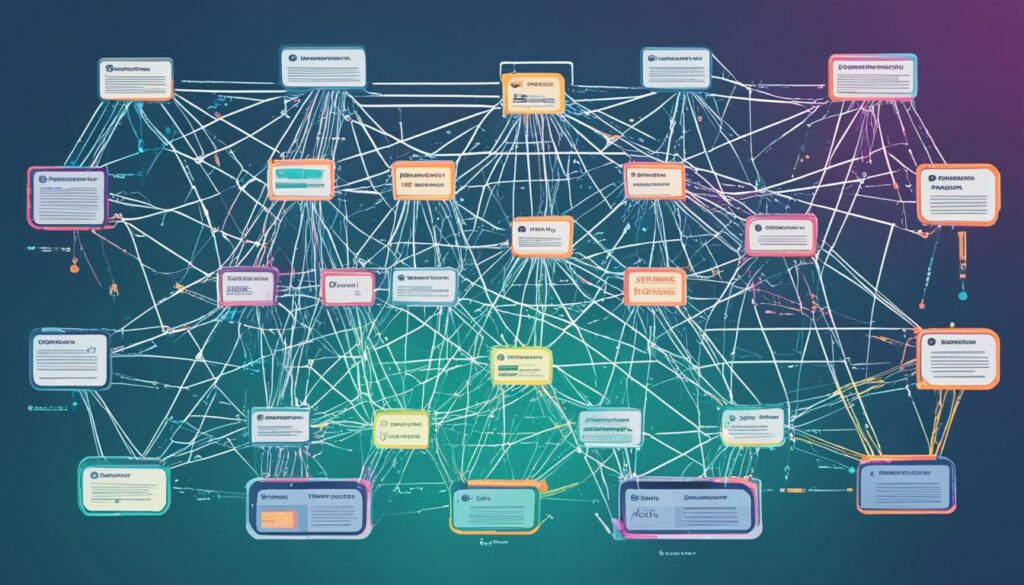Welcome to the comprehensive guide on automated website deployment! In this article, we’ll take you through the essential steps to ensure a seamless and error-free launch for your website. Whether you’re a seasoned developer or just starting your programming journey, this guide will provide you with practical C# code examples and a website deployment checklist to help you master the art of automated website deployment.
Website deployment is a critical phase in the development lifecycle that can greatly impact the success of your online presence. By automating the deployment process, you can save time, reduce human errors, and streamline the entire deployment workflow.
Throughout this guide, we’ll cover important aspects such as code quality, managing dependencies, and effective configuration management. With each section, you’ll gain valuable insights and practical examples to apply in your own projects. So, let’s dive in and explore the world of automated website deployment!
Key Takeaways:
- Automated website deployment is crucial for a seamless and error-free launch.
- Code quality can be ensured through automated reviews using tools like StyleCop in C#.
- Efficiently managing dependencies using NuGet simplifies integration of third-party libraries.
- Effective configuration management allows easy adjustment of application settings without modifying the code.
- By following the steps outlined in this guide, you can ensure a successful deployment for your website.
Ensuring Code Quality with Automated Reviews
Before deploying your website, it’s crucial to conduct thorough code reviews to catch potential issues early in the development process. Manual code reviews can be time-consuming and prone to oversight, but automated code reviews offer a more efficient and reliable solution.
One tool that can help automate code reviews is StyleCop in C#. StyleCop enforces coding standards by analyzing your code and providing feedback on style, layout, and consistency. By integrating StyleCop into your build process, you can ensure that your C# code adheres to defined coding standards consistently.
Automated code reviews bring several benefits to your development workflow:
- Consistent Code Quality: Automated reviews with tools like StyleCop ensure that every member of your development team follows the same coding standards, promoting code quality and readability across the project.
- Early Detection of Issues: Automated reviews can catch common coding mistakes and potential bugs before they make it into production. By identifying and correcting these issues early on, you can prevent costly and time-consuming debugging later.
- Improved Productivity: Automated code reviews save developers valuable time by highlighting coding issues and providing suggestions for improvement. This allows your team to focus on developing new features and addressing critical issues, rather than spending excessive time on manual code reviews.
- Reduced Technical Debt: By consistently enforcing coding standards and addressing code quality issues, you can reduce technical debt and ensure a maintainable codebase over time. This makes future updates and enhancements easier and less error-prone.
To assist you in integrating automated code reviews into your build process, we have prepared a sample MSBuild script that runs StyleCop. This script can be customized and added to your project’s build pipeline to automate code reviews, ensuring code quality throughout the development lifecycle.
“Automated code reviews are an essential part of the modern development workflow. By leveraging tools like StyleCop in C#, you can ensure consistent code quality, catch issues early, and improve productivity. Embrace automated code reviews to enhance your development process and deliver high-quality software.”
Implementing automated code reviews with tools like StyleCop in C# empowers your development team to deliver high-quality code that meets established coding standards. By automating the review process, you can achieve code consistency, catch potential issues early, and improve the overall efficiency of your development workflow.
Managing Dependencies Efficiently
When it comes to website deployment, effectively managing dependencies is crucial for ensuring a smooth and error-free process. In C#, one popular tool that simplifies dependency management is NuGet, a powerful package manager.
NuGet allows you to easily integrate third-party libraries into your project, saving you time and effort. With NuGet, you can quickly access and install packages that provide additional functionality or support for your application.
Dependency management is a critical aspect of modern software development. NuGet makes it easy to search for, install, and update packages, reducing the complexities of managing dependencies manually. This not only improves productivity but also helps ensure project stability and maintainability.
Let’s take a look at a C# example that demonstrates how to use NuGet for efficient dependency management:
Example: Managing Dependencies with NuGet
To manage dependencies in a C# project using NuGet, follow these steps:
- Create a new C# project or open an existing project in Visual Studio.
- Right-click on the project in the Solution Explorer panel and select “Manage NuGet Packages.”
- In the NuGet Package Manager window, you can search for desired packages by name or browse popular packages. Once you find a package, click “Install” to add it to your project.
- After installation, the package and its dependencies will be automatically added to your project. You can access and utilize the functionalities provided by the package in your code.
- To update a package to its latest version, right-click on the project and select “Manage NuGet Packages” again. In the NuGet Package Manager, go to the “Updates” tab and click “Update” next to the package you want to update.
By leveraging NuGet for dependency management, you can streamline the inclusion of external libraries into your C# project, ensuring a clean and efficient deployment process.
| Benefits of Using NuGet for Dependency Management | Challenges of Manual Dependency Management |
|---|---|
| 1. Simplifies the acquisition and integration of third-party libraries. | 1. Time-consuming process of manually downloading and including dependencies. |
| 2. Easy installation and updates of packages, improving project stability. | 2. Difficulty in managing different versions of dependencies. |
| 3. Centralized package repository with a vast selection of libraries. | 3. Risk of missing or incompatible dependencies. |
| 4. Enables effective collaboration by providing consistent dependencies across development environments. | 4. Tedious troubleshooting process when conflicts arise. |

Effective Configuration Management
Configuration management is a crucial aspect of developing and deploying applications. It involves managing the various settings and parameters that influence how your application behaves in different environments.
One common method of managing configuration settings is through the use of an app.config file in C# applications. This file allows you to store key-value pairs that can be easily accessed and modified, without the need to modify your code.
Let’s take a look at a C# example that demonstrates how to read configuration settings from an app.config file:
// Retrieve the value of a setting from app.config
string connectionString = ConfigurationManager.AppSettings[“ConnectionString”];
// Use the retrieved value in your application
using (SqlConnection connection = new SqlConnection(connectionString))
{
// Code goes here
}
In the example above, we use the ConfigurationManager.AppSettings property to access the value of a setting named “ConnectionString” from the app.config file. This value is then used to establish a connection to a database.
By leveraging the power of the app.config file, you can easily adjust your application’s settings without the need to modify your code. This makes it convenient to update configuration values based on different environments or user requirements.
Now that we’ve explored the benefits of effective configuration management and how it can be achieved using the app.config file in C# applications, let’s dive deeper into other aspects of deploying your website in the subsequent sections.
Conclusion
Deploying a chatbot is a crucial phase in today’s digital landscape. By carefully planning, developing, and executing the deployment process, you can ensure a successful implementation that brings numerous benefits to your business.
First and foremost, pre-deployment planning is essential. Understanding your chatbot’s purpose, target audience, and desired functionalities will guide the development process. Thoroughly mapping out your chatbot’s conversation flow, designing appropriate responses, and considering user experience will result in a more effective and user-friendly chatbot.
During the development phase, rigorous testing and quality assurance are vital. Ensuring that your chatbot performs flawlessly, responds accurately, and handles various user inputs is crucial for a successful launch. Regular testing helps identify and address any issues or limitations, ensuring an optimal user experience.
Choosing the right deployment environment is equally important. Consider factors such as scalability, security, and integration capabilities to select an environment that aligns with your business requirements. Additionally, exploring different deployment methods, such as hosting on cloud platforms or integrating with messaging apps, can expand the reach and accessibility of your chatbot.
Once your chatbot is ready for launch, it’s crucial to have a post-deployment maintenance plan in place. Regularly monitoring its performance, collecting user feedback, and addressing any emerging issues or updates ensure the chatbot remains effective and satisfactory for users over time. By staying proactive and continuously improving your chatbot, you can maximize its value and impact on your business.
FAQ
Q: What is website deployment?
A: Website deployment is the process of making a website live and accessible on the internet.
Q: Why is website deployment important?
A: Website deployment is crucial because it directly impacts the success of your online presence.
Q: What is the ultimate website deployment checklist?
A: The ultimate website deployment checklist includes important aspects such as code quality, managing dependencies, and effective configuration management.
Q: How can I ensure code quality during website deployment?
A: You can ensure code quality by conducting thorough code reviews and using tools like StyleCop in C# to automate code reviews and enforce coding standards.
Q: How do I manage dependencies effectively during website deployment?
A: You can manage dependencies effectively by using NuGet, a popular package manager in C#, to simplify the integration of third-party libraries.
Q: Why is configuration management important during website deployment?
A: Configuration management is important because it regulates the behavior of your application across different environments.
Q: How can I read configuration settings during website deployment?
A: You can read configuration settings from an app.config file in C#, allowing you to easily adjust your application’s settings without modifying the code.
Q: What is chatbot deployment?
A: Chatbot deployment is the process of planning, developing, testing, and launching a chatbot for your business.
Q: What are the steps involved in chatbot deployment?
A: The steps involved in chatbot deployment include pre-deployment planning, bot development, testing and quality assurance, choosing the right deployment environment, deployment methods, launching the chatbot, and post-deployment maintenance.
Q: How can I ensure a successful chatbot deployment?
A: To ensure a successful chatbot deployment, consider factors such as security, compliance, and following the steps outlined in this comprehensive guide.
Source Links
- https://www.linkedin.com/pulse/website-deployment-ultimate-checklist-amr-saafan-xxzdf?trk=public_post_main-feed-card_feed-article-content
- https://medium.com/@dulanjanalakmal/automating-website-deployment-to-aws-ec2-using-github-actions-76997c52747a
- https://bootcamp.uxdesign.cc/tutorials-bot-deployment-guide-749fdbe7210b












